Brief overview of the Caridina shrimp hobby
The Caridina shrimp hobby has exploded in popularity over the past decade, captivating aquarium enthusiasts worldwide. These small, colorful freshwater crustaceans have become prized additions to planted tanks and nano aquariums. Hobbyists are drawn to their vibrant colors, intricate patterns, and fascinating behaviors, making them both decorative and engaging pets.
Importance of rare variants in the community
Within the Caridina shrimp community, rare variants hold a special place of reverence. These unique shrimp, often the result of selective breeding or chance mutations, drive innovation and excitement in the hobby. Rare shrimp variants not only showcase the genetic diversity within the genus but also present challenges and opportunities for dedicated breeders. The pursuit of these elusive creatures has fostered a passionate subculture of collectors and breeders, all striving to discover or create the next stunning variety.
Teaser about the rarest shrimp of 2024
As we delve into 2024, the world of Caridina shrimp continues to evolve, with new and exciting variants emerging on the scene. This year promises to unveil some of the most extraordinary and rare specimens yet, pushing the boundaries of color, pattern, and form. From crystal-clear bodies adorned with intricate designs to bold, never-before-seen hues, 2024’s rarest Caridina shrimp are set to captivate hobbyists and redefine the limits of shrimp breeding. Join us as we explore these living jewels of the aquarium world and uncover the most coveted Caridina shrimp of the year.
Lava Tigers: The Crown Jewel of 2024
Lava Tigers are a striking variant of Caridina shrimp, characterized by their vibrant burgandy-red base color adorned with bold white tiger stripes. Their exoskeleton has a unique glossy sheen, reminiscent of flowing lava. What sets Lava Tigers apart are their distinctive black or metallic purple/black carapace, adorned with intricate patterns and splashes of white, contrasted against a deep red or burgundy body resembling a fancy tiger. The contrast between the fiery background and dark facial markings creates a visually stunning appearance that sets them apart from other Caridina varieties.
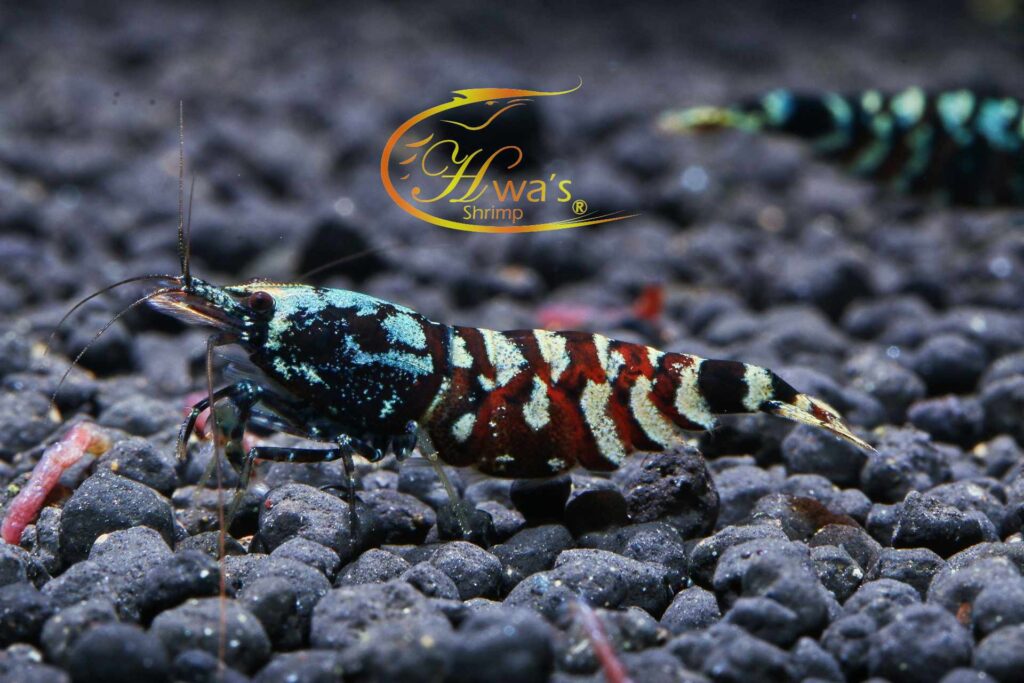
Rarity and exclusivity
- Lava Tigers are extremely rare in the hobbyist market. Their scarcity is due to the challenging breeding process and the limited number of successful spawns. Only a handful of specialized breeders are known to have viable populations, making these shrimp highly sought after by collectors.
- Due to their rarity and high demand, Lava Tigers command premium prices in the aquarium trade. They are among the most expensive Caridina shrimp varieties available in 2024, with individual specimens potentially fetching hundreds of dollars. Championship winning Lava Tigers command $3,000-$6,000 a shrimp.
Lava Tigers represent a significant achievement in Caridina breeding. The combination of their intense coloration and distinct pattern is the result of 6 years of selective breeding. This feat represents a profound challenge due to the complexities involved in maintaining genetic integrity and achieving desired phenotypic outcomes. The stark contrast between its metallic black carapace and the intricately striped burgundy body underscores the pioneering approach taken by Hwa in advancing selective breeding techniques within the industry.
2023 – The German International Shrimp Contest – Dortmund
- Category 17: Caridina sp. Crossbreeds – 2nd place
2024 – North American International Shrimp Competition
- Category 14: Caridina sp. Innovation and Crossbreeds – 1st and 3rd place
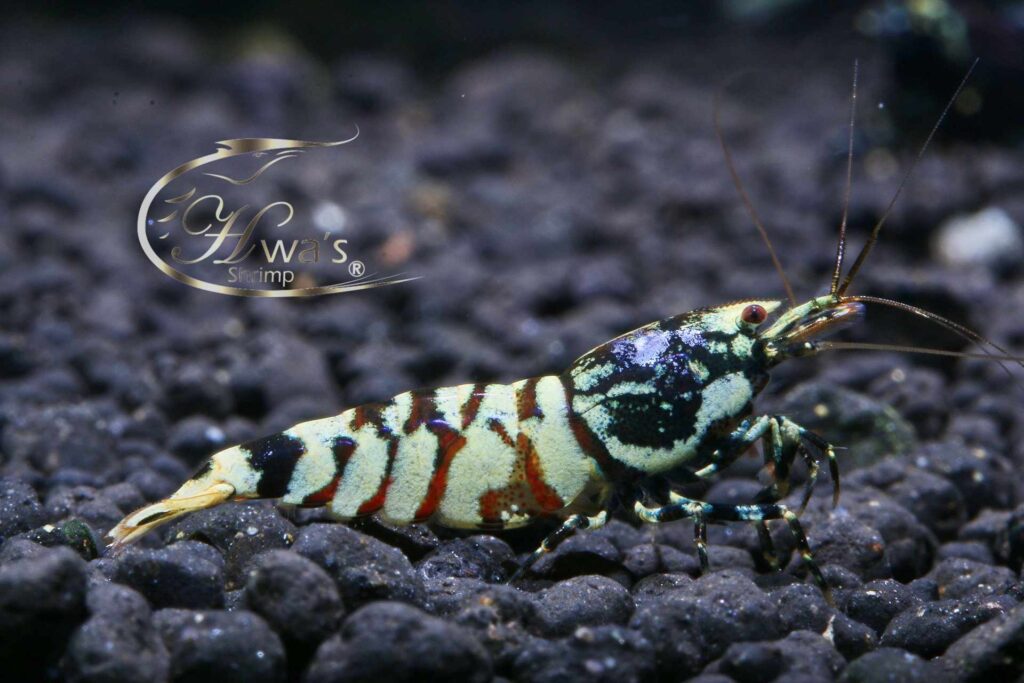
Other Rare Caridina Variants
Red Ultimate Snowfall/Sandstorm
This variant combines the sought-after Galaxy pattern with a vibrant red base color and striking white speckles. The overall effect resembles a cosmic snowstorm against a crimson sky. Rarity: Extremely limited, with public availability only as of 2023. Notable features: Intense red coloration with extremely fine, detailed speckles across the entire body. These speckles are extremely difficult to selectively breed in such detail. Dots tend to form and form larger blotches on most shrimp. The ability to product this detailed trait is a testament to the breeders abilities.
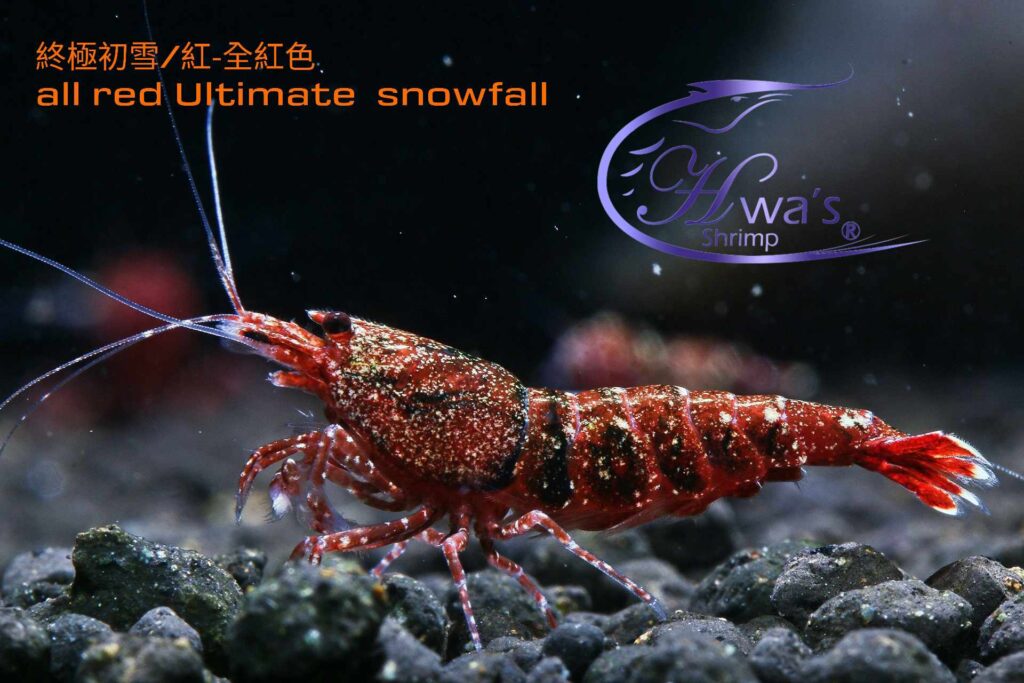
Fishbone Fancy Tiger
A Fancy Tiger featuring a jet-black/red body with a thick and solid “fishbone” pattern running along its length. Most fancy tigers on the market today are known for their tiger stripes. But this variant takes it to a new level with not just a backline funning down the top of it’s body, but a backline with symmetrical and evenly spaced fishbone “ribs”. Many reputable breeders in the industry are certain this will become the industry standard for fancy tigers once this trait is successfully reproduced at scale.
Rarity: Very rare, with breeding success rates still quite low. Publicly seen at 2023 CIPS and 2024 NAISC.

Purple Metallic Hornet
This variant showcases a deep purple base color with a metallic sheen, accented by golden “hornet” stripes across its body. Rarity: Scarce, and not yet commonly available. Notable features: Mesmerizing purple, metallic luster that shifts under different lighting conditions.
Factors Contributing to Rarity
Breeding difficulties
- Genetic complexity: Rare Caridina variants often result from multiple recessive genes, making it challenging to consistently reproduce desired traits.
- Low fertility rates: Some rare variants may have reduced fertility compared to other variants, due to increased backcrossing and lack of outcrossing. This results in fewer offspring per breeding cycle.
- Sensitive environmental requirements: Rare shrimp often require precise water parameters and conditions to thrive and breed successfully, which can be difficult to maintain consistently.
- Fragile offspring: The larvae of rare variants may have lower survival rates, necessitating meticulous care during the early stages of development.
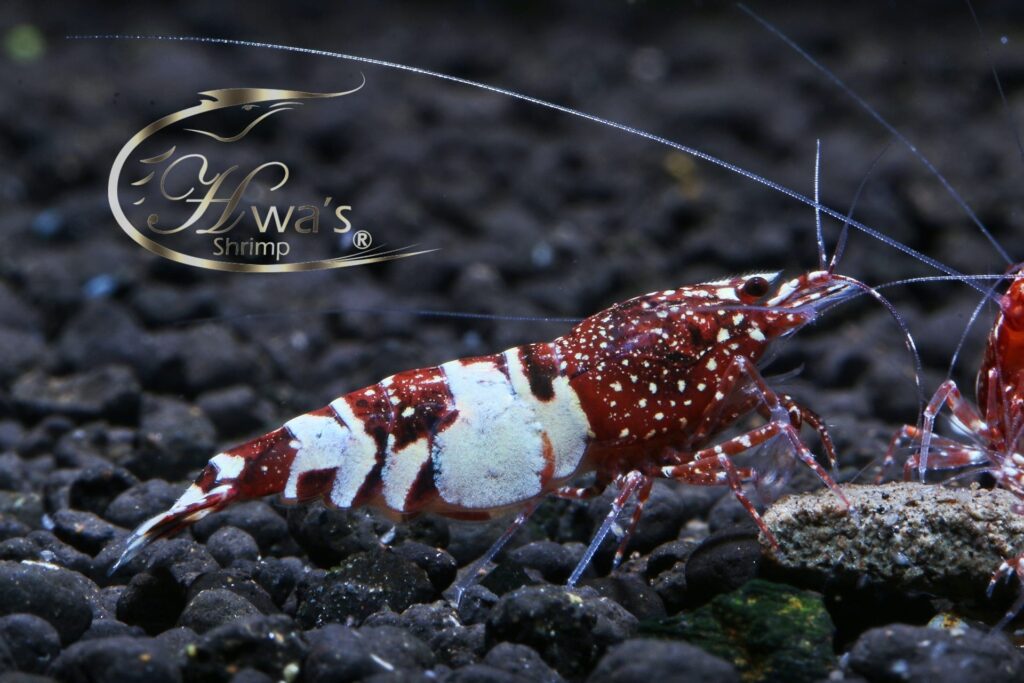
Limited distribution
- Controlled releases: Breeders of rare variants often limit the initial distribution to maintain exclusivity and ensure proper care practices are followed.
- Geographic restrictions: Some rare Caridina may only be available in specific regions due to export/import regulations or the breeder’s location.
- Breeder agreements: Exclusive contracts between breeders and select distributors can restrict the availability of rare shrimp in the broader market.
High demand among collectors
- Prestige factor: Owning rare Caridina shrimp often confers status within the hobby community, driving up demand among serious collectors.
- Investment potential: Some collectors view rare shrimp as investments, anticipating that their value will increase over time. Offspring of their investments can also yield high returns.
- Competitive breeding: Hobbyists eager to create new variants or improve existing lines contribute to the high demand for rare breeding stock.
- Social media influence: Stunning photographs and videos of rare Caridina shared online can create sudden surges in popularity and demand.
- Limited supply vs. growing hobby: As the shrimp-keeping hobby expands globally, the demand for rare variants often outpaces the available supply.
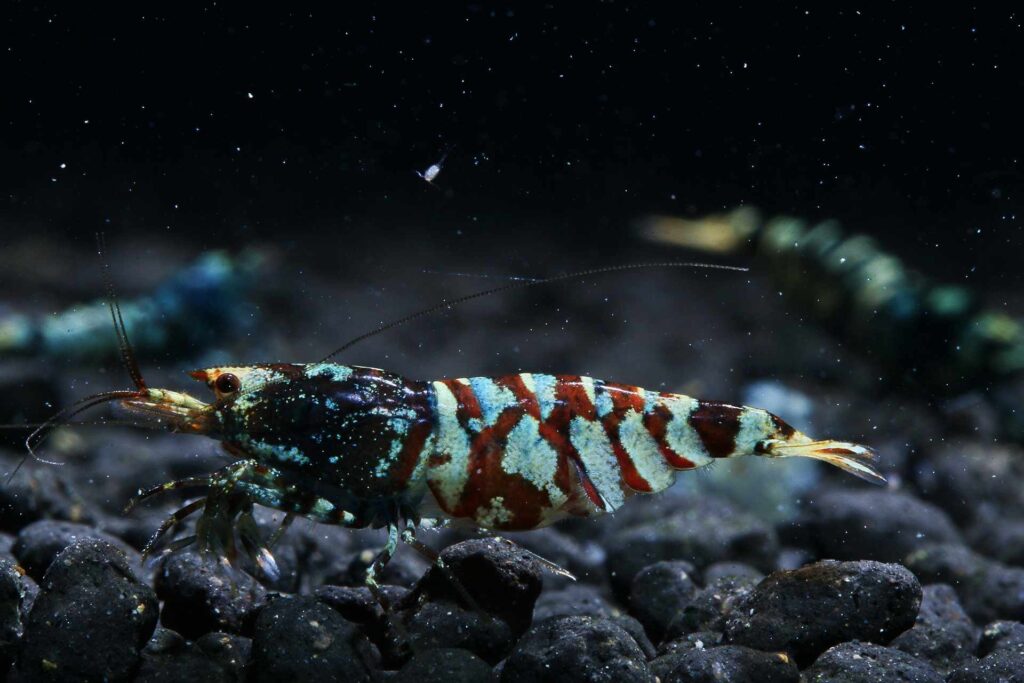
Collecting and Caring for Rare Caridina Shrimp
Challenges in acquisition
- Limited availability: Rare Caridina shrimp are often sold out quickly or have long waiting lists.
- High costs: Prices for rare variants can be prohibitively expensive for many hobbyists.
- Authenticity concerns: The risk of purchasing mislabeled or hybrid shrimp sold as rare variants.
- Shipping risks: Transporting delicate, rare shrimp safely over long distances can be challenging.
- Ethical considerations: Ensuring that rare shrimp are sourced from reputable breeders who follow sustainable practices.
Recap of the rarest Caridina shrimp in 2024
As we’ve explored in this article, 2024 has seen some truly exceptional Caridina shrimp variants emerge. From the stunning Lava Tigers with their fiery coloration to the Red Ultimate Snowfall, Fishbone Fancy Tiger, and Purple Metallic Hornet, the world of rare Caridina continues to evolve and surprise enthusiasts. These prized specimens represent the pinnacle of shrimp breeding, showcasing remarkable colors, patterns, and unique characteristics that push the boundaries of what we thought possible in Caridina genetics.
The ongoing appeal of rare shrimp in the hobby
The allure of rare Caridina shrimp remains as strong as ever in 2024. These living jewels continue to captivate hobbyists with their beauty, rarity, and the challenge they present to both keepers and breeders. The pursuit of rare variants drives innovation in the hobby, encouraging advancements in breeding techniques, tank setups, and husbandry practices. Moreover, these extraordinary shrimp serve as ambassador species, drawing new enthusiasts into the world of aquarium keeping and fostering a deeper appreciation for the diversity of aquatic life.
Encouragement for responsible collecting and breeding
While the excitement surrounding rare Caridina shrimp is undeniable, it’s crucial to approach collecting and breeding these delicate creatures with responsibility and ethics in mind. We encourage hobbyists to:
- Source shrimp from reputable breeders who prioritize the health and genetic diversity of their stock.
- Educate themselves thoroughly on the specific needs of rare variants before acquisition.
- Practice patience and diligence in caring for these sensitive animals, providing them with optimal living conditions.
- Participate in shrimp keeping communities to share knowledge and experiences, contributing to the collective understanding of rare Caridina care.
- Consider the environmental impact of the hobby and support conservation efforts for wild shrimp populations and their habitats.
- Approach breeding projects with a focus on maintaining genetic health and species integrity, rather than solely pursuing short term profitability.
- Engage in ethical culling practices that prioritize the overall health and quality of the shrimp population.









